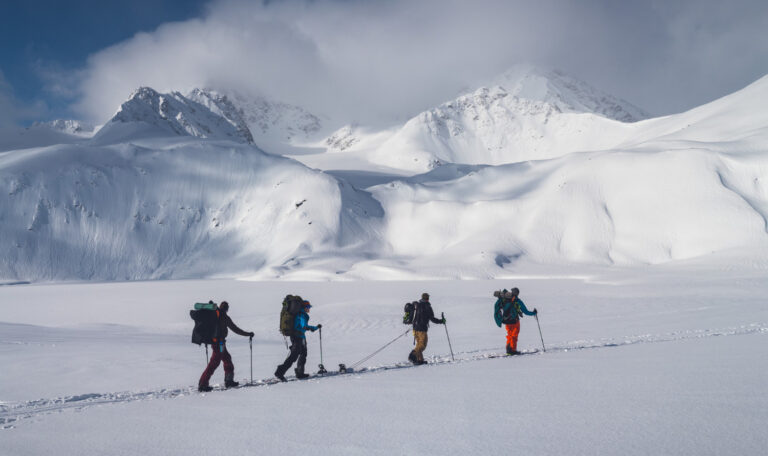Nepal, nestled in the lap of the Himalayas, is a haven for trekking enthusiasts. The country offers an array of treks that cater to both novices and experienced trekkers. But with so many options, how do you choose the best trekking route for your first visit? This guide is here to help!
Table of Contents
Determine Your Trekking Experience
Before diving into the plethora of routes, assess your own trekking experience. Are you a beginner looking for gentle trails or an expert seeking challenging terrain?
- Beginners: Routes like the Ghorepani Poon Hill Trek or the Langtang Valley Trek are ideal.
- Intermediate: Consider the Annapurna Base Camp Trek or the Everest Base Camp Trek.
- Advanced: For those craving a challenge, the Manaslu Circuit Trek or the Kanchenjunga Circuit are excellent choices.
- Identifying Intermediate Trekkers: Intermediate pedestrians have some experience of touring and are comfortable with moderate mounds and trails. They’re looking to explore further different geographies
Decide on Trek Duration
Nepal offers treks that last anywhere from a few days to over three weeks. Your choice should depend on how much time you have and how long you’re comfortable trekking.
- Short Treks (3-7 days): Ghorepani Poon Hill,Helambu Circuit
- Medium Treks (8-15 days): Annapurna Base Camp, Gokyo Lakes Trek
- Long Treks (Over 16 days): Everest Base Camp via Gokyo Ri, Upper Mustang
- Upper Mustang Trek: The Upper Mustang Trek, gauging over three weeks, uncovers the mysterious Mustang area with stark geographies and a rich Tibetan culture. Explore ancient cloisters and precipice-sculpted grottoes.
Consider the Trek’s Altitude
Nepal’s treks vary greatly in altitude. It’s crucial to understand the altitude range of the trek to avoid altitude sickness.
- Lower Altitude (<3500m): Ideal for beginners or those wary of high altitudes. Examples: Tamang Heritage Trail
- Medium Altitude (3500–5000 -m): requires gradual acclimatization. Examples: Everest Base and Annapurna Base Camp.
- Higher Altitude (>5000m): Make sure you’re well-acclimatized and physically prepared. Examples: Thorong La Pass on the Annapurna Circuit.
Seasonal Preferences
Different seasons offer varied trekking experiences in Nepal:
- Spring (March to May): warm days, vibrant rhododendron blooms, and clear skies Popular for almost all treks.
- Monsoon (June to August): Ideal for treks in rain-shadow areas like Upper Mustang. Expect rain and leeches in other areas.
- Autumn (September to November): best visibility and weather conditions Most popular trekking season.
- Winter (December to February): suitable for low and mid-altitude treks Higher regions might be snow-covered.
Cultural and Scenic Preferences
Do you wish to immerse yourself in local culture or just bask in nature’s beauty?
- Cultural Treks: Upper Mustang (Tibetan culture), Tsum Valley (authentic Buddhist culture), Tamang Heritage Trail (Tamang culture).
- Scenic Treks: Annapurna Circuit, Everest Base Camp, Langtang Valley
Making the Choice
Choosing between artistic and scenic treks eventually depends on your preferences and what you seek in your travel experience. Then there are some factors to consider
- Interest: Still, rituals and customs, if you have a keen interest in learning about original traditions.
- Scenic Beauty: Still, conclude scenic journeys if you’re a nature sucker and wish to be awestruck by the majestic Himalayan geographies.
- Time: Consider the duration of your treks. Cultural treks tend to be longer, while scenic journeys like Langtang Valley are shorter and ideal for trippers with limited time.
Budget Constraints
From teahouse treks to camping adventures, Nepal offers treks for every budget.
- Budget Treks: Local routes like the Helambu Circuit can be more pocket-friendly.
- Mid-Range to High-End: Popular treks like the Annapurna or Everest Base Camp can be costlier due to their popularity and logistics.
- Budgeting for Your Trek: When planning your trek, it’s essential to consider not only the touring costs but also other charges like permits, gear reimbursement, and companionships. Be sure to produce a budget that includes these aspects to avoid any surprises during your adventure.
- Packing Smart: When packing for your Nepal trek, decide to rent or buy gear in Kathmandu or Pokhara. Pack smoothly to avoid redundant gatekeeper freight, and consider traveling in the shoulder seasons for better prices.
Consult with Trekking Agencies
Finally, for the best experience, consult with local trekking agencies. They offer valuable insights, take care of permits, and can customize routes based on your preference. These professionals have inestimable perceptivity, manage essential permits, and can tailor your trip to suit your preferences. Partnering with them ensures a well-organized and substantiated adventure, making your trip in the Himalayas truly exceptional.
Conclusion
Choosing the right trek in Nepal depends on various factors, from your experience level to budget constraints. This beautiful country offers something for everyone, ensuring that your Himalayan adventure becomes a cherished memory. Do your research, understand what you want from the trek, and let the mountains call you! Safe trekking!

